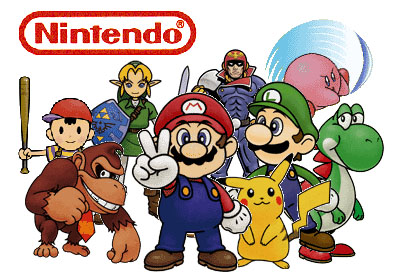JEWISH THOUGHT OF THE DAY
Talking to the Wall

There are countless jokes about someone pleading with a person, receiving no results and lamenting, “It’s like talking to a wall.”
The expression, of course, dates back 2,000 years (the jokes are a lot newer). For countless years, Jews have been praying towards what is known as the “Western Wall”, the “Wailing Wall” or in Hebrew, the “Kotel”.
Immediately after the U.N. declared Israel an independent state in 1948, Israel was attacked by five invading armies in what was called the War of Independence. In a stunning display of determination and ingenuity, after countless fatalities on all sides, the fledging Jewish nation was victorious. But the “Wall” was captured by the Jordanians and after more than 1,900 years of free access by members of all religions, the Western Wall found itself behind barbed wire, inaccessible to all except those who sought to disgrace it by turning it into a garbage dump.
Only in 1967 was the Wall returned to Jewish hands where it has since become the foremost center of attention in the world.
People by the thousands, not hundreds, come every day to see it, marvel at the mighty stones that enveloped some unknown, long-ago structure and to pray there. They come from all walks of life, from virtually every country on earth to see the famous wall that has been the yearning of the Jewish people for 2,000 years.
But why pray there? Aren’t people just “talking to the Wall?” Not if you ask them. There is a special feeling, a feeling of closeness to a Super Being, a spiritual, emotional feeling that elevates the soul when it bonds with its Source. It leaves a lifetime impression on people of all religions when they come to pray at that one, special location.
Does Gd exist or not? For those who come to the Wall to pour out their hearts and walk away knowing that their prayers have been answered, perhaps with a “yes” perhaps with a “no”, you will never convince them otherwise.
But for those who refuse to consider that there is a Higher Power watching over us and hearing our prayers, well for them, it’s like talking to a wall.
Subscribe to our blog via email or RSS to get more posts like this one.
Posted in:
by
Max Anteby
![]() March 28, 2012
March 28, 2012
Seeing is Believing

A famous actor once quipped, “Who are you going to believe, me or your eyes?”
Even though he was only joking, the answer would be obvious. As long as we can see things for ourselves, we can use our intellect and understanding to make sense of a situation.
So what are some of the things we see going on around us?
We see the Israeli government sending the most advanced medical teams to Haiti to aid in their recent emergency recovery efforts.
We see Israeli scientists teaming up with representatives of other countries to assist them in turning their arid deserts into fertile lands.
We see throughout history the Jewish Fundamentalists, you know - those guys with the long beards, black coats and black hats - building schools, soup kitchens and charity organizations to benefit themselves and their neighbors.
We see thousands of Jews of all backgrounds pouring out into the streets to find one lost kidnapped boy.
We see modern democracies basing their laws and ethics on the principles laid out in the “Old Testament”.
We see Jews at the forefront of every major social movement initiated for the betterment of man – even if they don’t always turn out that way.
We see Jews in every country on the globe living peaceably with their neighbors.
We see more medical innovations and patents coming out of the Jewish nation than all other nations combined.
We see Jews being granted Nobel prizes far in excess of their overall percentage of the world’s population.
We see Jews fighting alongside Christians for school vouchers to benefit all private school children and to protect the moral and ethical standards of our society.
We see Israeli hospitals treating injured suicide bombers, pregnant Arab women and the critically ill of their warring neighbors.
What do we NOT see?
Jews in Arizona slitting the throats of Mexicans who dare to invade America.
Jews in London blowing up train stations to protest against escalating anti-Semitism.
Jews in Mumbai recklessly shooting hotel guests and passersby who differ with their ideology.
Jewish suicide bombers.
Jews massacring Nazi, Arab, Christian or czarist children while they sleep.
Jews destroying religious sites in America, France, England, Russia or even Germany.
Jews sending rockets into civilian areas to drive their enemies into the sea.
It was the Jews who brought the concept to the world that “He who saves even one life, is as if he saved the entire universe.”
For 2,000 years, no one has ever seen Jews as aggressors anywhere in the world. So what makes the world believe that we are doing that now in the land of Israel?
I ask you - who are you going to believe, the media or your eyes?
(For more information on this topic, see the new publication – David and Goliath by Shraga Simmons).
Subscribe to our blog via email or RSS to get more posts like this one.
Posted in:
by
Max Anteby
![]() March 12, 2012
March 12, 2012
Did You Ever See a Yellow Shark?

Did you ever hear a fireside chat?
I’ve heard them crackle, but I couldn’t make out the words.
Did you ever see a baseball bat?
Probably not, they don’t have any hands to hold it.
Did you ever catch a train?
I hope not, you could get hurt.
And of course, no one has ever seen an elephant fly, except of course for Dumbo.
But did you ever see a yellow shark?
No. Never. And you never will. Because there’s something special about their skin. They have tooth like scales that make them feel silky smooth when you stroke them in one direction (which I also don’t recommend), and sharp as sandpaper in the other direction. The shape of those scales reduces drag and gives sharks unbelievable speed to catch their prey underwater.
But the advantage is greater than that. Scientists have found that the small, triangular shape actually prevents the buildup of algae and that’s why you’ll never see a yellow shark. But far more importantly, scientists realized that if shark scales could prevent the spread of algae, they could also use it to prevent the spread of bacteria.
The world of medicine has been able to kill 99% of bacteria that is harmful to humans. But with the increased use of pesticides and antibiotics, the remaining 1% represents the strongest strains and could prove deadly.
So scientists began experimenting with strips of plastic called “sharklets” engineered with minute replicas of shark scale patterns. Amazingly, they have virtually eliminated the spread of bacteria under real life conditions in hospitals and other high-contact areas.
They tried other shapes and other configurations but only the patterns that exactly matched those of the shark were successful in preventing the colony-like breeding of bacteria.
Miracle of science? No.
Miracle of Nature? Yes.
Whoever That Is.
Subscribe to our blog via email or RSS to get more posts like this one.
Posted in:
Jewish Beliefs & Philosophy
by
Max Anteby
![]() February 28, 2012
February 28, 2012
Advantage: Nintendo

We never had video games when I was growing up, even in the arcades. The most exciting game we had was skeeball. It’s a game much like bowling only the balls went into holes with points associated with them. The more points you accumulated, the better your chance of winning a plastic necklace or a deck of cards the size of a matchbox.
Now there are video games- both the kinds you find at the arcade as well as the ones you hold in your hands. I’m not that much good at them but most people nowadays from the age of four and up can spend hours advancing from level one to two to six, seven or eight. The prize? A great learning experience.
How’s that?
The first time Mario appears, he scouts out the area. Go left or go right? Before he has a chance to think - ZAP! He’s eaten by a giant on his left.
Next time out, Mario looks left, jumps, avoids the giant then continues down the road. Two seconds later (that’s about all the patience the player has), a raindrop is falling. Jump up, grab it - BING! 100 points. A second later, another giant - ZAP - and Mario is down again.
Learning from experience, you, the player, remember - look left, ZAP, walk right, BING, look left again, ZAP again. And so the adventure continues, encounter after encounter, level after level.
If only life were as predictable. Help an old lady cross the street - BING - a Lexus appears in your driveway. Fail to give a poor man a quarter - ZAP - you step ankle deep into a puddle.
Unfortunately, life does NOT work that way. Sometimes the person who helped the little old lady misses his bus to work and gets balled out for coming in late and the guy who didn’t give the quarter to the poor man uses it buy the winning lottery ticket that pays mega-bucks.
Not every giant is bad and not every raindrop is good.
So how are we supposed to know how to live life? I wish we had a Book of Instructions like the one that comes with the Gameboy.
We do.
(I’ll let YOU fill in the next line).
Subscribe to our blog via email or RSS to get more posts like this one.
Posted in:
by
Max Anteby
![]() February 21, 2012
February 21, 2012
Fourth Down and Goal to Go

I understand that fully one-half of the people reading this probably have no idea what the title means. So I will explain.
In the U.S. game of football, a team has four chances to advance ten yards closer to their goal. Once they traverse the entire field and arrive within the last ten yards before their opponent’s goal-line, they still have the same four chances, but they must either score their “touchdown”, settle for less by kicking what’s called a field goal or lose the ball.
Many times a team will march closer and closer, yard by yard until they have only one yard to go to score. Naturally, the defense digs in and becomes more and more determined so that crossing the goal line becomes that much more difficult. That’s why when the team finally scores, the one who takes them across gets the credit for the entire effort.
Judaism looks at a person as if he is on ladder, much like a vertical version of a football field. The goal is to reach the top. Sometimes a person starts out closer to the top (much like when a team intercepts a pass on the 50-yard line) because perhaps s/he was born into an observant family or because they had the benefit of an intense Jewish education. But as s/he goes through life, they never advance any closer to their goal. Others might begin on their own one-yard line and have to march the entire one hundred yards of the field to meet their ultimate goal. But they plug away, sometimes advancing, sometimes retreating, but always regaining that chance to advance to the next rung. It doesn’t matter where you start out in life, it only matters that you keep trying to move forward.
Together all of the Jewish people have been striving to bring about the final redemption leading to world peace and the universal knowledge of God. That has always been our goal. The sages of this generation tell us that we’re on our opponent’s one-yard line and all we need is that final surge. But the defense is pushing back harder than ever. If we all pull together, outsmart the defense and focus on our goal, then this could be the generation that gets the credit for the entire 3300 year effort to bring the Messiah. Let’s not settle for less and let’s not lose the ball.
Go Team!
Subscribe to our blog via email or RSS to get more posts like this one.
Posted in:
by
Max Anteby
![]() February 6, 2012
February 6, 2012
Leap!

Thirty days hath September
April, June and November
To continue the logic, if every month had 30 days, that would make 360 days in something that we call a year. Actually, a year is 365 days. Actually it’s a little more than that, it’s 365 and ¼ days. That’s why every four years we add a day. We call it a “Leap” Year, just like 2012 for example.
What exactly constitutes a year? It’s a measure of the time it takes the earth to make one complete revolution around the sun. (Did you ever wonder how the ancients knew we had completed one complete cycle? Maybe they recognized the sunspots??)
The Jewish year is only 354 days because, in the main, we rely on the lunar cycle. 354 divided by 12 months gives you 29 and ½ days per month. Actually, it’s a little more than that. Actually, it’s 29 and ½ days plus 793 one-thousand-and-eightieths of an hour. We stated that over two thousand years go. How did we know? The Talmud said it was a tradition handed down to us from generation to generation.
The people at NASA (the National Aeronautic and Space Administration of the United States) wondered how the Jewish people could have calculated it so accurately? NASA said, without the benefit of satellites, laser beams and telescopes, the best we could have done was guess.
So they decided to test our calculation. And they were right. We were off. We said a lunar month was 29.53059 days. It’s not. It’s 29.530588 days. Every thousand years, we would be off by about 17 hours. I can live with that (assuming I live for a thousand years).
So, a year is one complete revolution of the earth around the sun and a month is one complete revolution of the moon around the earth. A day, as we all know, is one complete rotation of the earth around its axis. But what’s a week? One complete cycle between paydays? Who came up with the idea of a week?
Travel to any country in the world, they all have a Tuesday, they all have a Sunday and most agree that you have to give your workers at least one day off in seven. Why seven days? Why not twelve or three or thirty?
Just like most everything else good in the world, it all comes from the Bible. Jewish, Christian, pagan or atheist, a week is a week. Seven days. The day off, for three quarters of the globe, is called the Sabbath.
Chalk it up as another giant Jewish “leap” for mankind.
Subscribe to our blog via email or RSS to get more posts like this one.
Posted in:
Jewish Beliefs & Philosophy
by
Max Anteby
![]() February 1, 2012
February 1, 2012
The Krazy Glue Syndrome

Krazy Glue is a great product. It even has its own website. Bet you didn’t know there are more than a dozen different varieties of Krazy Glue. It even comes in colors! And what is its claim to fame? It can bond any two surfaces together instantly. Even your fingers.
So answer me this question. After you use Krazy Glue the first time, you put the cap back on the tube to keep it from drying out. How come you can unscrew the cap off the tube the second time? Why isn’t it Krazy Glued together?
I’m sure there’s an answer. But I have another question for you.
If your stomach can digest any organic material you put into it, how come it doesn’t digest itself? Even if you ate a cow’s stomach, or a goat’s or a chicken’s, it would break it down and digest it. Why not the same thing with your own stomach? (The animals we eat don’t eat flesh, they are herbivorous, not carnivorous so they likely cannot digest OUR stomachs. But I would hate to find out if a lion’s or a bear’s stomach could).
It seems that there are glands in the walls of the stomach that secrete a bicarbonate solution that helps to neutralize the hydrochloric acid that the stomach uses to digest food. If you’ve ever had acid reflux, you know how that stuff burns. It’s so powerful, it would actually burn the skin of your finger if you touched it. And yet, the bicarbonate only works on your stomach walls, not the food. Amazing.
Here’s another one. When any type of poison or bacteria invades the body, the phagocytes and white blood cells automatically rush to the site to battle the invader and shield the body from harm. Feces (sorry), human waste material, is highly poisonous. If re-ingested, it can cause untold harm, even death. How can it stay in your colon and rectum (sorry again) for hours at a time and not harm your body?
Last one. Your kidneys filter 200 quarts of blood every day. They remove impurities and excess water from your circulatory system and send them out of your body in the form of urine. How come you never have to change the filters in your kidneys? In your car, it’s every 3,000 miles. And how come nothing happens to your bladder?
Impurities can harm anything else in your body except those agents that are in charge of protecting the body. Germs and harmful bacteria stick to everything except them. Just like the cap of Krazy Glue.
Krazy. No?
Subscribe to our blog via email or RSS to get more posts like this one.
Posted in:
Jewish Beliefs & Philosophy
by
Max Anteby
![]() January 25, 2012
January 25, 2012


